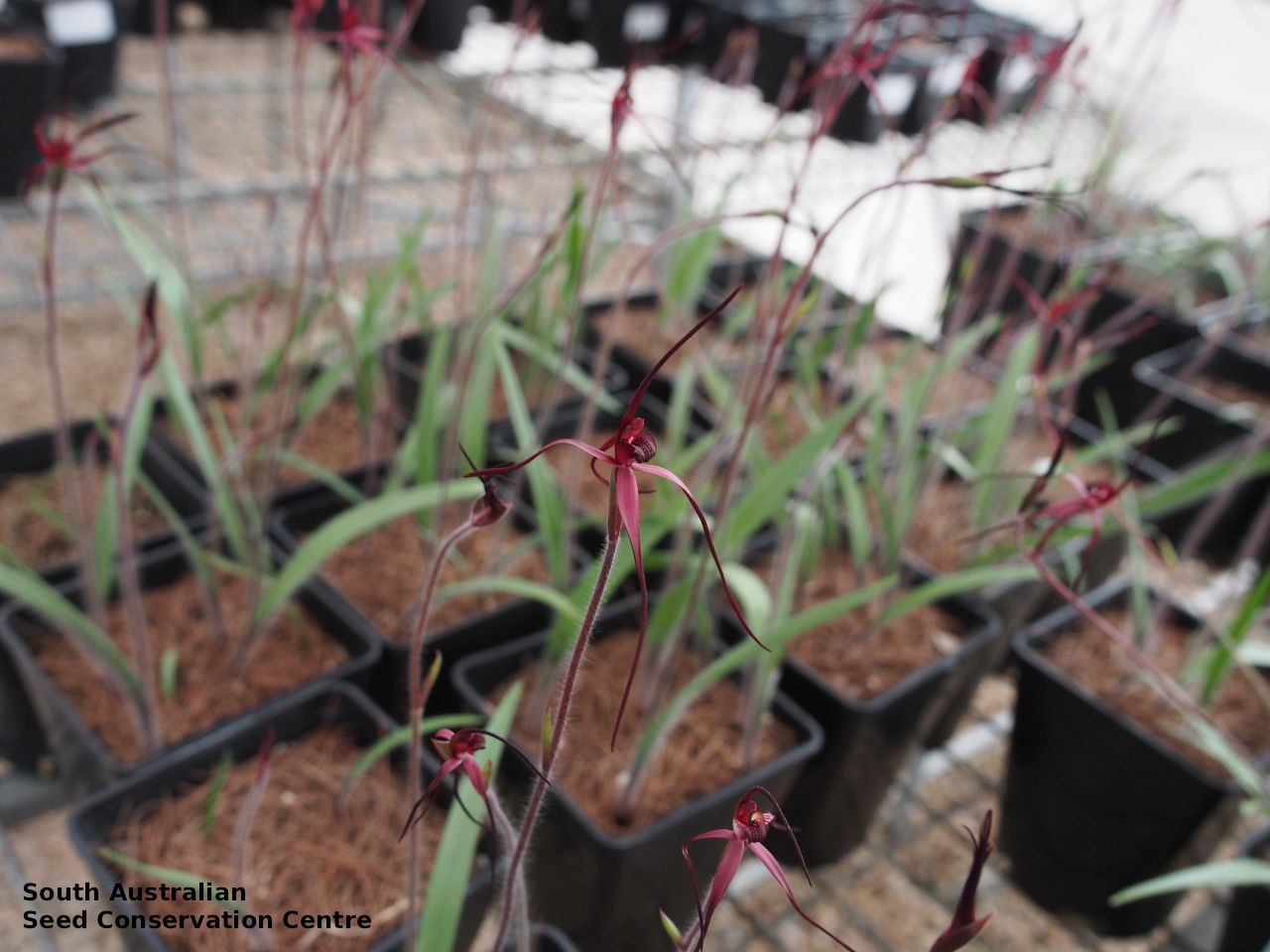
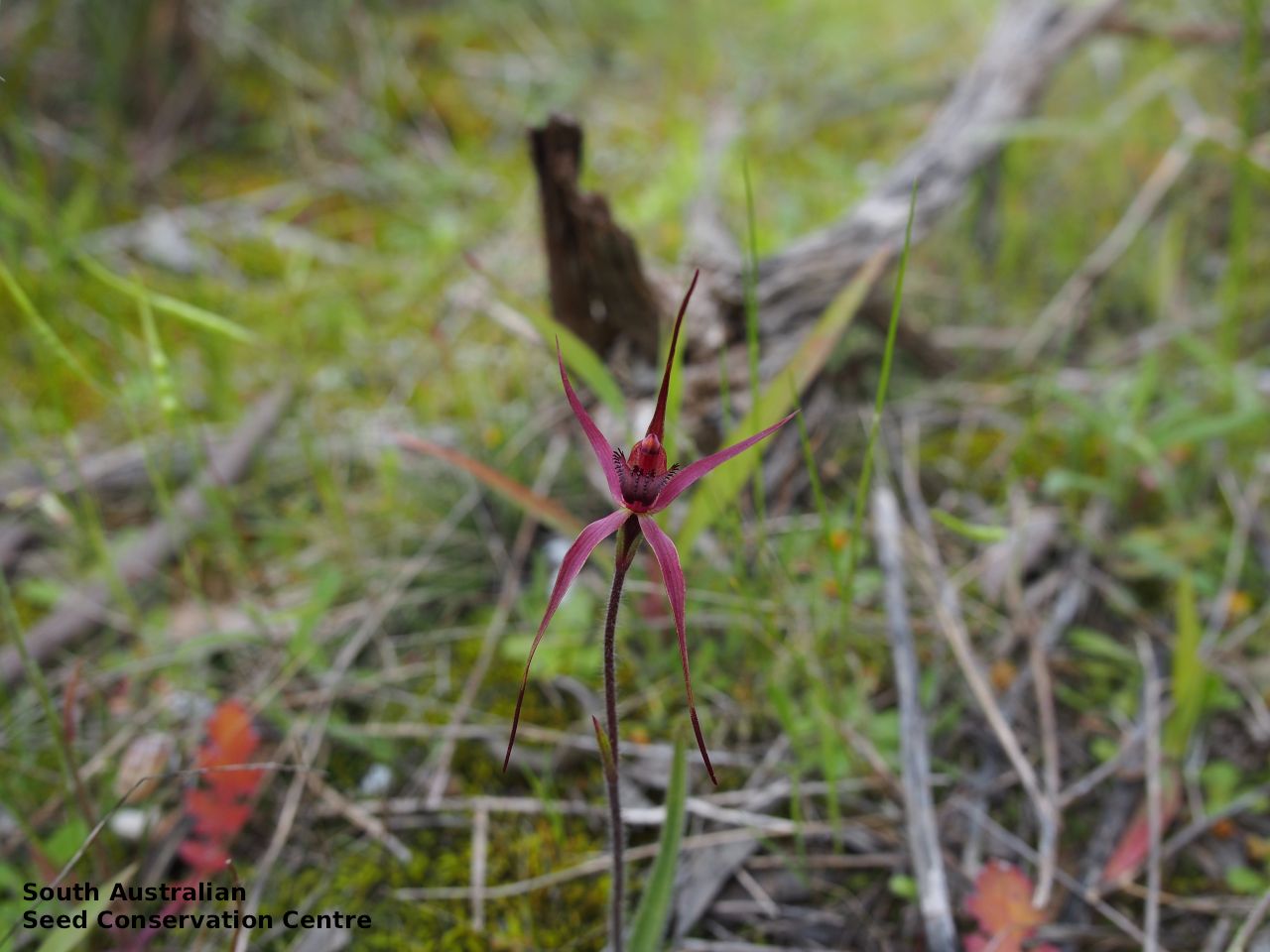
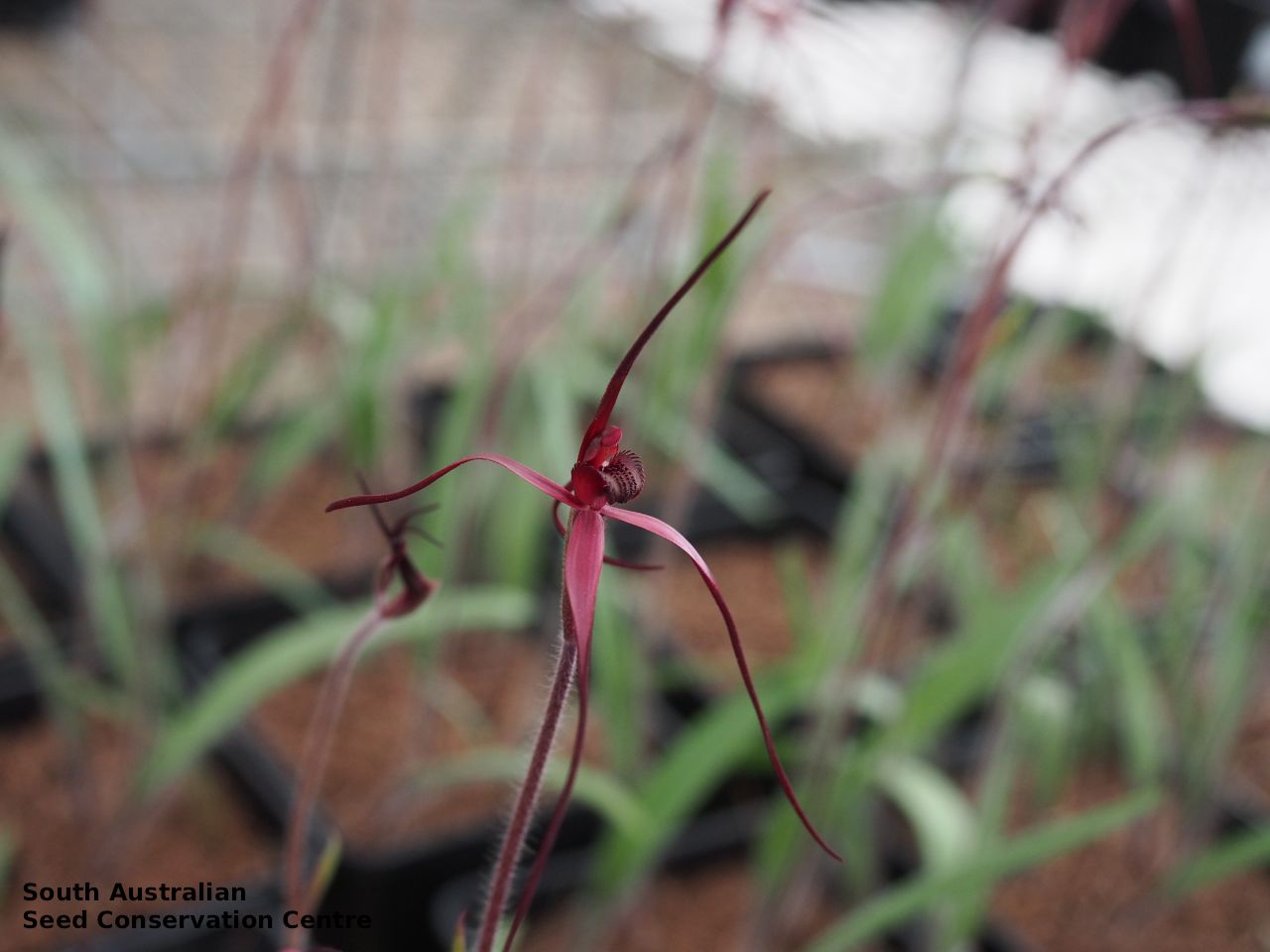
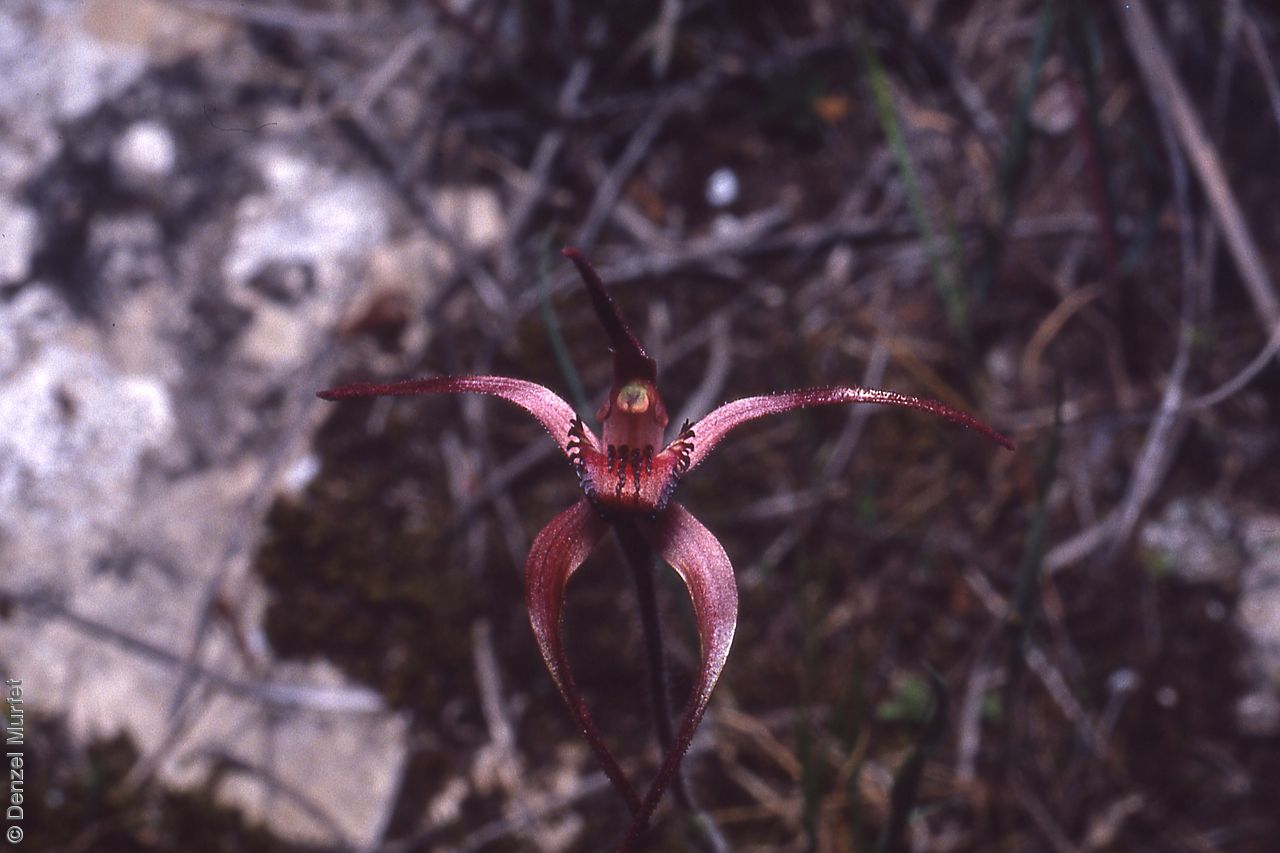
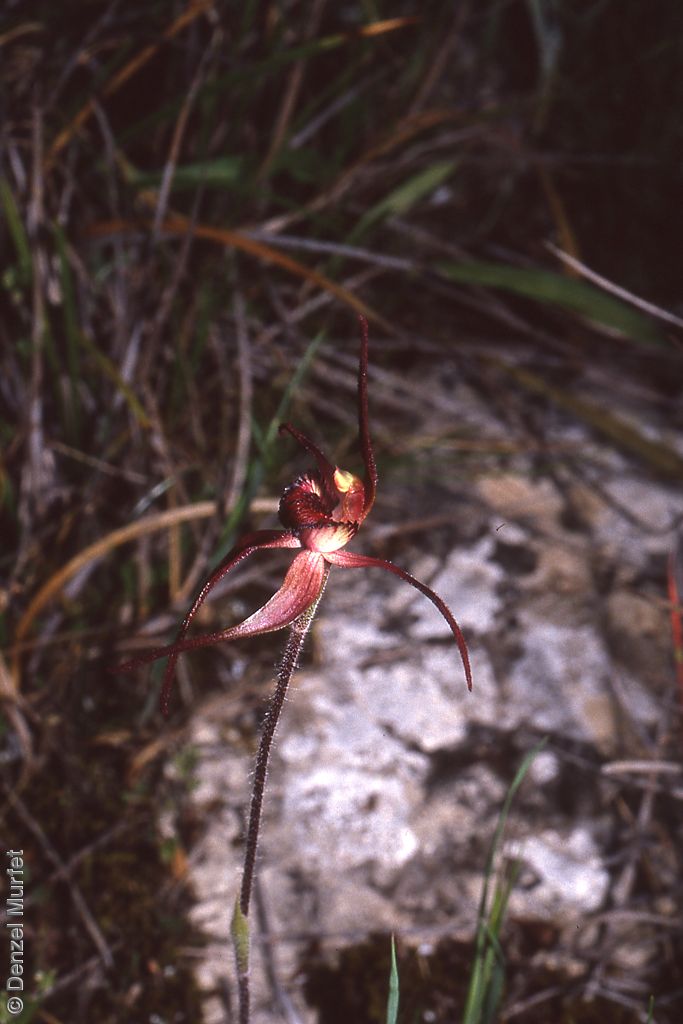
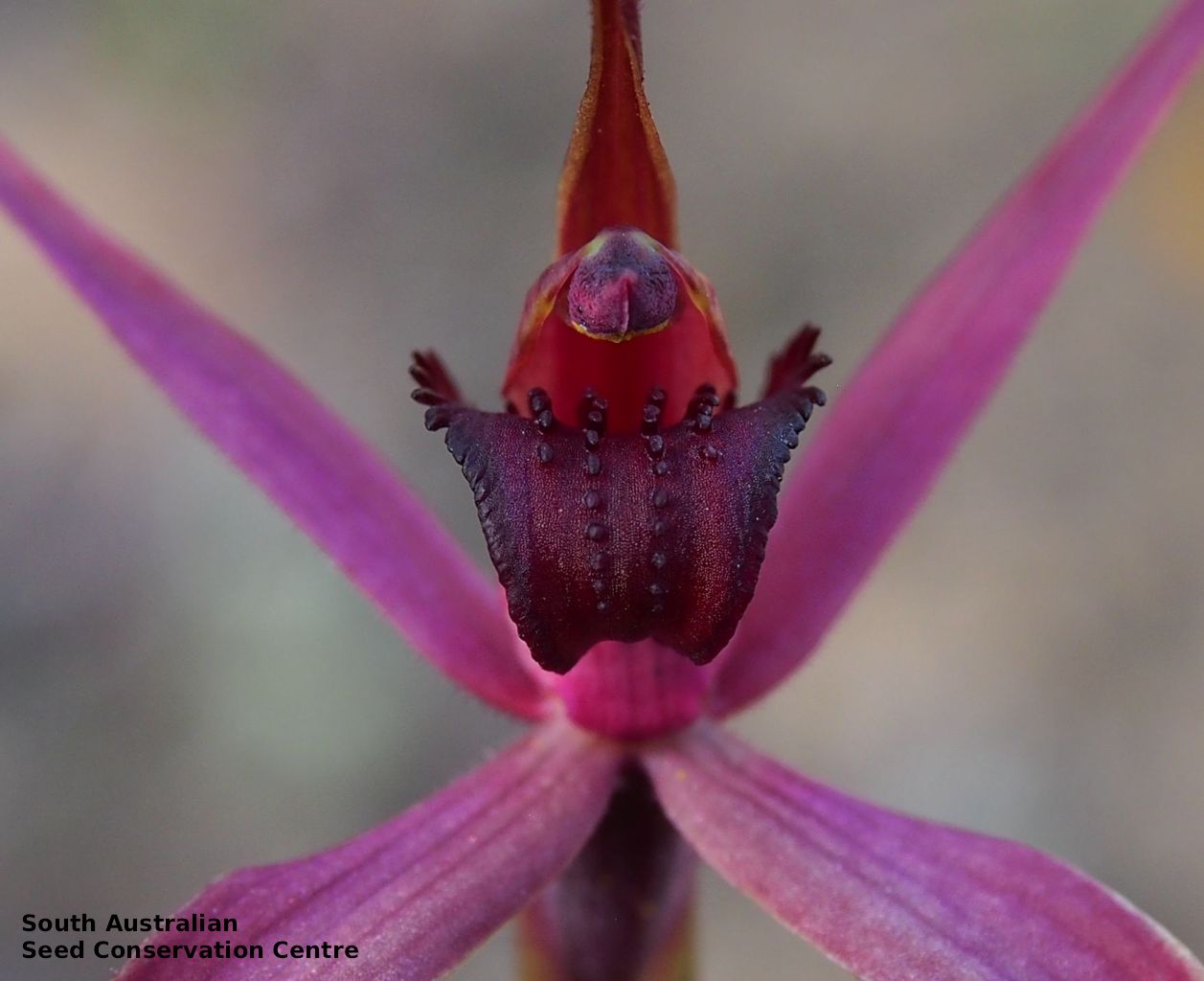


Prior names
Calonemorchis concolor
Arachnorchis concolor
Calonema concolor
Caladenia patersonii var. concolor
Common names
Maroon Spider-orchid
Crimson Spider-orchid
Etymology
Caladenia from the Greek 'kallos' meaning beauty and 'aden' meaning a gland, referring to the colourful labellum and the glistening glands at the base of the column that are present in many of the species. Concolor meaning one colour, refers to the one colour on all the perianth segments.
Distribution and status
Found along the eastern margins of the southern Mt Lofty Ranges in South Australia, growing in woodlands on sandy soils. Also found in New South Wales and Victoria. Native. Endangered in South Australia. Endangered in Victoria. Vulnerable in Australia (EPBC Act).
Herbarium regions: Flinders Ranges, Murray, Southern Lofty
NRM regions: Adelaide and Mount Lofty Ranges, South Australian Arid Lands, South Australian Murray-Darling Basin
AVH map: SA distribution map (external link)
Plant description
Hairy terrestrial herb with dark red flowering stem that grows to 30 cm in height. Leaves narrow-lanceolate, to 16 cm long, sparsely hairy. Flowers deep crimson or purplish-red, with a spidery shape and strong fragrance like hot motor. Labellum is ovate, to 1 cm in long, with poorly differentiated lobes that are dark red. Lateral lobes of the structure are fringed with acute, curving marginal teeth to 0.3 cm in length and end in acute curving tips, midlobe has short blunt teeth. Central calli-stalks are short, in 4-6 rows but do not conspicuously overlap. Sepals and lateral petals grow to approximately 4.5 cm in length, dark red and have dark and hairy filamentous tails that grow up to half the length of the segments.Tails of lateral petals and sepals are drooping or obliquely deflexed. Flowering between August and September. Fruits are pale-brown hairy, papery ellipsoid capsule containing numerous tiny seeds.
Seed collection and propagation
Collect seeds between October and November. Collect fat capsules as they start to dry and turn brown. Pods will split and release the seeds quickly and will require monitoring. To increase the chances of collecting mature pods, it is recommended that a small breathable bag (ie. Organza bags) be used to enclose the developing capsules. Place the capsules in a container that will hold fine seeds and leave to dry for a few weeks or until the capsule split. Then carefully hold the capsule and tap it gently to release the seeds. Store the seeds with a desiccant such as dried silica beads or dry rice, in an air tight container in a cool and dry place, refrigerator or in liquid nitrogen.